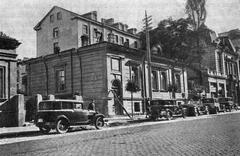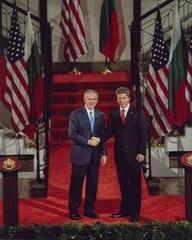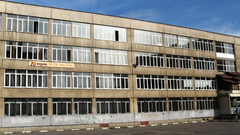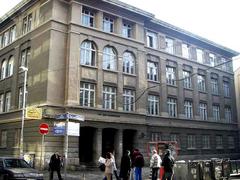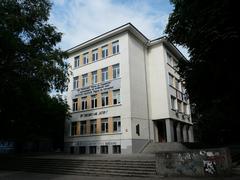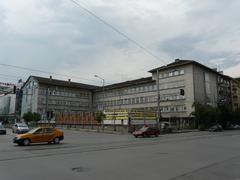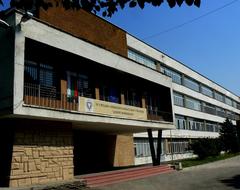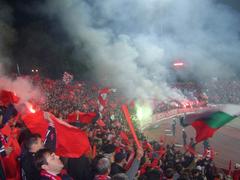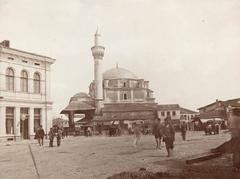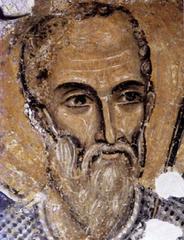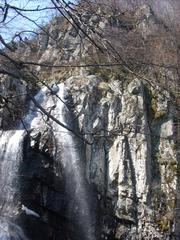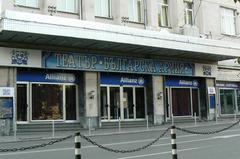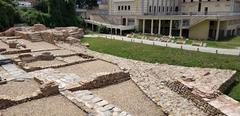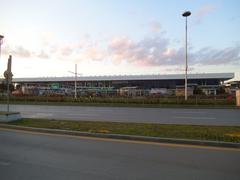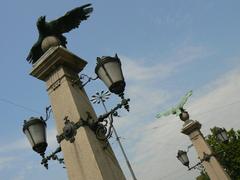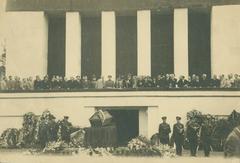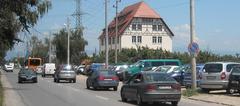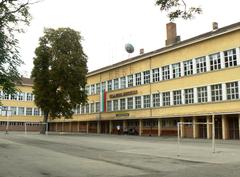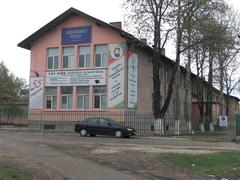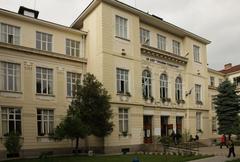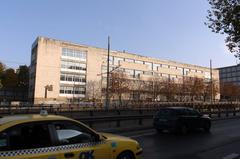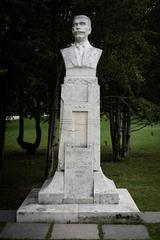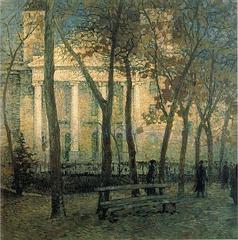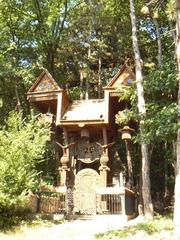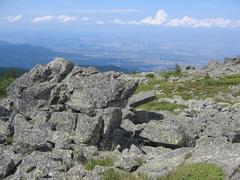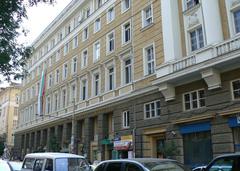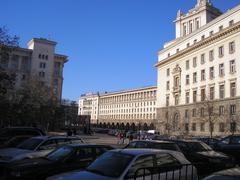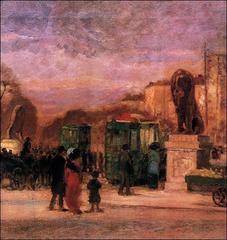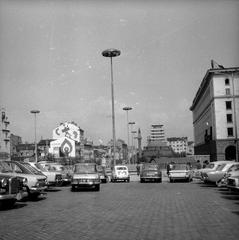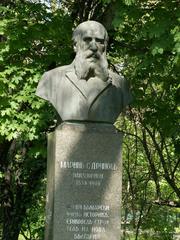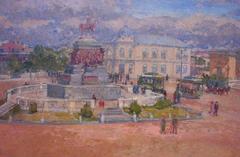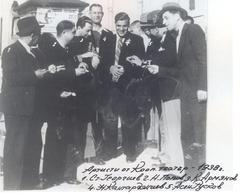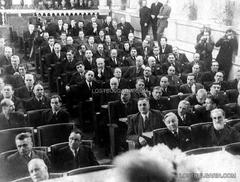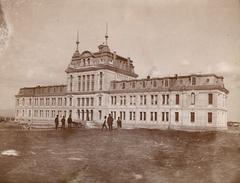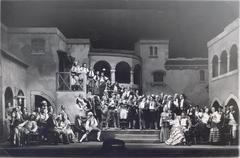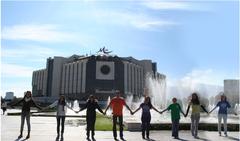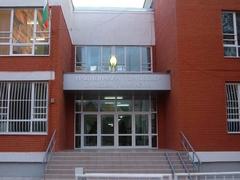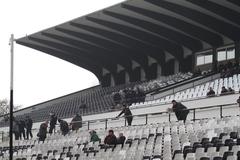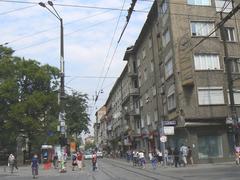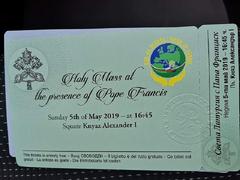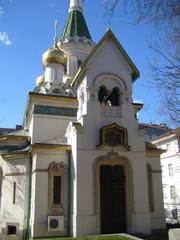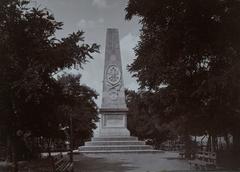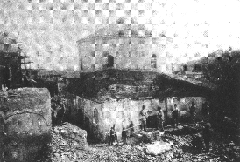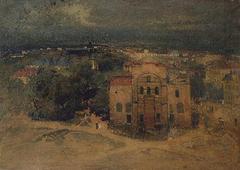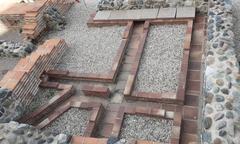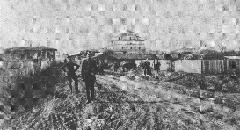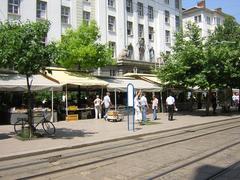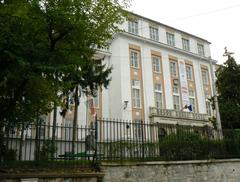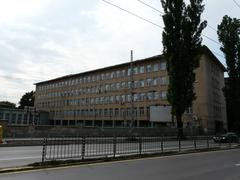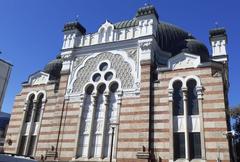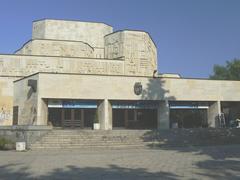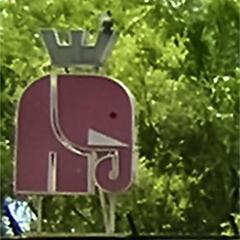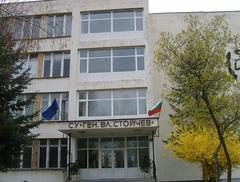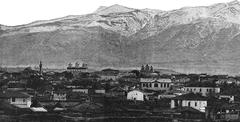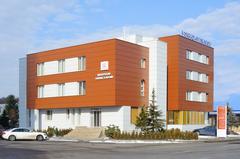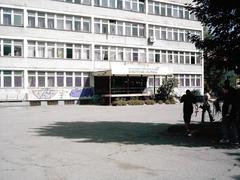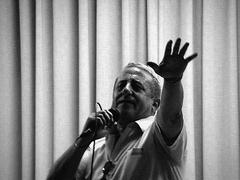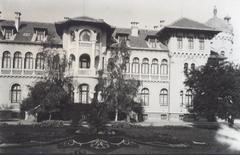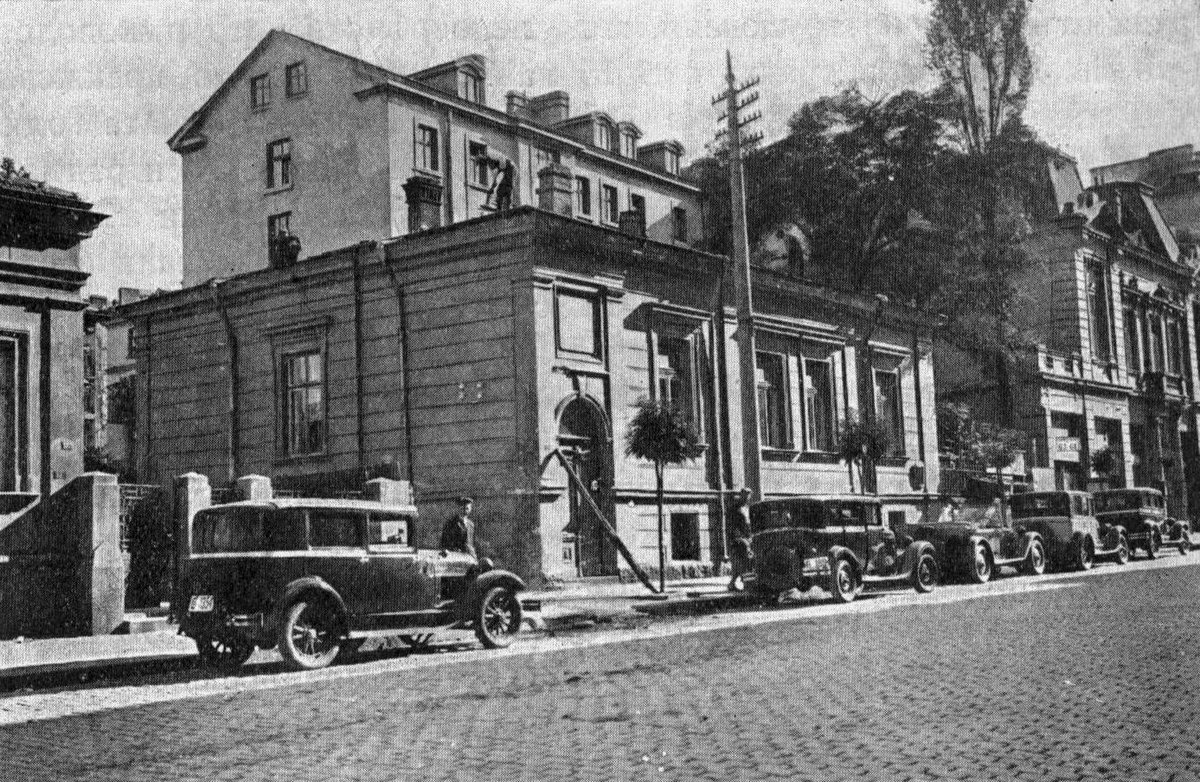
National Archaeological Museum Sofia, Bulgaria: Visiting Hours, Tickets, and Comprehensive Guide
Date: 14/06/2025
Introduction
Nestled in the vibrant heart of Bulgaria’s capital, the National Archaeological Museum Sofia is both a guardian of the country’s millennia-old heritage and a striking example of cultural adaptation. Housed within the historic Buyuk Mosque—Sofia’s oldest and largest mosque, built in the 15th century—the museum presents an unparalleled journey through Bulgaria’s archaeological and architectural legacy. It stands as a testament to Bulgaria’s resilience, reflecting a complex national identity shaped by prehistoric, Thracian, Greek, Roman, and medieval civilizations. Whether you are a history enthusiast, architecture admirer, or curious traveler, the museum promises a captivating exploration of the Balkan past (Wikipedia; Spotting History).
Table of Contents
- Introduction
- Historical Origins and Evolution
- Architectural Significance
- Museum Collections and Exhibition Halls
- Visiting Information: Hours, Tickets, and Accessibility
- Visitor Experience and Tips
- Nearby Attractions and Connectivity
- Frequently Asked Questions (FAQ)
- Conclusion
- References
Historical Origins and Evolution
Early Conception and Establishment
The idea for a national archaeological museum in Bulgaria emerged during the 19th-century Bulgarian National Revival, a time when intellectuals sought to reclaim and study the nation’s cultural inheritance. After liberation from Ottoman rule in 1878, the vision took form. Officially established by decree of Knyaz Ferdinand in 1892, the museum began as the “Museum-temple of the Fatherland,” symbolizing Bulgaria’s renewed cultural identity (Wikipedia).
Development and Growth
The museum opened its doors in 1905, quickly becoming a central hub for archaeological research and public education. Under its first director, Václav Dobruský, the collection grew rapidly. In 1920, the Archaeological Institute was founded, later merging with the museum in 1948 under the Bulgarian Academy of Sciences (BAS). This merger established Bulgaria’s largest archaeological research unit, coordinating nationwide excavations and scholarly work.
Architectural Significance
From Mosque to Museum
The museum occupies the former Buyuk (Koca Mahmut Paşa) Mosque, constructed between 1451 and 1494. As Sofia’s oldest and largest mosque, it is an architectural landmark featuring robust stone masonry, a grand central dome, and simple yet elegant design elements characteristic of early Ottoman architecture (Spotting History).
Preservation and Adaptation
Transforming the mosque into a museum posed preservation challenges, particularly regarding humidity control for artifact safety. Despite modifications and expansions, the building’s historic character remains intact, offering visitors a unique and immersive atmosphere (Wikipedia).
Museum Collections and Exhibition Halls
The museum’s collections span from the earliest known human presence in the region (dating back 1.6 million years) to the late Middle Ages. Affiliated with the National Archaeological Institute, it is a leading research and educational center in the Balkans (museology.bg).
Main Exhibition Halls
- Prehistory Hall: Displays Paleolithic to Bronze Age artifacts, including the Neolithic Mother-Goddess figurine from Mursalevo (c. 6000 BC) and early tools and pottery.
- Main Hall: Features treasures from Thracian, Greek, Roman, and early Byzantine eras. Highlights include Thracian gold and silver jewelry, the stone inscription from Serdica, and the replica of the Madara Horseman (a UNESCO World Heritage symbol).
- Medieval Section: Showcases items from the Bulgarian capitals of Pliska and Preslav, such as the oldest known Bulgarian icon (St. Theodor, 9th century), weapons, jewelry, and religious objects.
- Vault Hall (Treasury): Houses the Valchitran gold treasure (over 12 kg of gold vessels), the gold mask of a Thracian ruler, the bronze head of Seuthes III, and the Lukovit silver treasure, highlighting the region’s ancient wealth and artistry.
- Temporary Exhibition Hall: Hosts rotating displays, including recent archaeological finds and thematic exhibitions (museology.bg).
Thematic and Chronological Organization
Exhibits are arranged to guide visitors through Bulgaria’s cultural development, with each hall focusing on successive civilizations and technological advances. Informational panels and multimedia displays add context to the artifacts.
Visiting Information: Hours, Tickets, and Accessibility
Visiting Hours
- Summer (May–October): Daily, 10:00 AM – 6:00 PM
- Winter (November–April): Tuesday to Sunday, 10:00 AM – 5:00 PM (closed Mondays)
- Last entry: 30 minutes before closing
- Closed: December 25, January 1; shortened hours on December 24 and 31 (official website)
Tickets and Admission (as of June 2025)
- Adults: 10 BGN
- Students: 2–5 BGN (depending on category)
- Seniors: Discounted rates; free on the second Thursday of each month
- Children under 7: Free
- Family tickets: 12–16 BGN
- Free admission: Last Sunday of each month
- Tickets available at the entrance and online (official website)
Accessibility
- Wheelchair access and assistance provided; accessible restrooms available
- Multilingual guided tours (English, Bulgarian; others on request)
- Cloakroom, gift shop, and accessible signage
Visitor Experience and Tips
Atmosphere and Facilities
- The museum’s grand Ottoman dome and stonework create a contemplative setting.
- Air conditioning and climate control can be variable; dress accordingly, especially in summer.
- Photography is generally permitted (no flash or tripods).
Multilingual Support
- Some exhibit labels are only in Bulgarian; translation apps and digital resources are recommended.
- The museum offers a 3D virtual tour and digital exhibits for more in-depth exploration.
Recommended Visit Duration
- Allow 1.5–2 hours to see all major sections and highlights.
Nearby Attractions and Connectivity
The museum’s central location (2 Saborna Street) makes it accessible via public transit (Serdika Metro Station) and places it within walking distance of several major landmarks:
- Alexander Nevsky Cathedral
- St. Nedelya Church
- Rotunda Church of St. George
- Banya Bashi Mosque
- Ancient Serdica Archaeological Complex
These sites provide a broader perspective on Sofia’s layered past.
Frequently Asked Questions (FAQ)
Q: What are the museum’s hours?
A: May–October: Daily, 10:00 AM–6:00 PM; November–April: Tuesday–Sunday, 10:00 AM–5:00 PM (closed Mondays).
Q: How much are tickets?
A: Adults: 10 BGN; students: 2–5 BGN; discounted and free days available.
Q: Is the museum wheelchair accessible?
A: Yes, with accessible entrances and restrooms.
Q: Are guided tours available?
A: Yes, in Bulgarian, English, and other languages upon request.
Q: Can I take photos?
A: Yes, but no flash or tripods.
Q: Are English-language materials available?
A: Some labels are in English; translation tools or digital exhibits enhance the experience.
Conclusion
The National Archaeological Museum Sofia offers a comprehensive window into Bulgaria’s archaeological and cultural legacy, uniquely housed in the architecturally significant Buyuk Mosque. As both a museum and a research institution, it preserves and presents a sweeping narrative—from prehistoric settlements and Thracian treasures to medieval relics. With affordable tickets, free admission days, guided tours, and a central location, it is an essential destination for all visitors to Sofia. For an optimal experience, consult the official museum website, use digital resources, and plan your visit to include nearby historical sites.
Enhance your journey with the Audiala app for real-time updates and audio guides, and follow us on social media for more travel tips and Sofia cultural highlights.
References
- National Archaeological Museum, Bulgaria – Wikipedia
- National Archaeological Museum Sofia – Spotting History
- National Archaeological Museum Sofia – museology.bg
- National Archaeological Museum Sofia – NIAM-BAS Official
- National Archaeological Museum Sofia – museums.eu
- National Archaeological Museum Sofia – About Sofia
